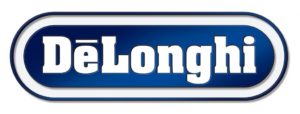
By implementing these strategies, businesses can work towards a more favorable cost-to-retail ratio, enhancing their profitability and competitive edge in the market. It’s important to remember that this is not a one-size-fits-all approach; each business must tailor cost to retail ratio these strategies to fit their unique circumstances and market dynamics. In the retail inventory method, Cost-to-Retail Ratio is calculated on a historical basis. So if there’s any markup fluctuation during the current period, the calculation will be inaccurate.
How to calculate the retail inventory method
- They purchase a new model of headphones for $60 each, intending to sell them at $150, which gives them a cost-to-retail ratio of 0.4.
- The retail inventory method (RIM) is an accounting tool that quickly estimates the value of your merchandise.
- If you sold 120 of them, the cost of goods sold was $24, and you have $16 for the ending inventory.
- By being mindful of these pitfalls and adopting a nuanced approach to cost-to-retail ratio analysis, businesses can enhance their inventory management strategies and bolster their bottom line.
- All retailers are different, and the retail inventory method is an optimal accounting strategy for specific types of retailers.
- With Lightspeed’s intuitive inventory management solution, they can manage their vast product catalog much more efficiently.
Often, weighted average is used alongside FIFO or LIFO to create a more well-rounded costing method. That said, WAC is best used when it’s too complicated to figure out what you paid for each unit in your inventory. Weighted average cost (WAC) helps to calculate the average cost of your inventory per unit. Ending inventory is the total value of products available for sale at the end of your designated accounting period (usually a fiscal year).
Products
Now you need to calculate how much you spent buying additional inventory during Q1. According to inventory reports, in January, you purchased an additional $500 in jeans, then spent $250 on jeans in February, and another $500 on jeans in March. By adding these purchases together, you learn that the value of your newly purchased inventory is $1,250. First you need to find the cost of goods for the jeans available for sale that you had in stock at the start of the quarter. By looking at data from your point-of-sale (POS) system, you see that on January 1, you already had $1,000 worth of jeans in stock.
Calculating inventory value through the retail inventory method

A supplier might use the cost-to-retail data to argue for better wholesale prices or more favorable terms, especially if the products in question have a proven track record of strong sales. In most cases, the retail method of accounting is not realistic because of the variations in product pricing. For example, product damage, theft, depreciation, markdowns can affect the price of the inventory. This is why the calculations made using the retail inventory method should serve only as an estimate. Physical inventory counts or cycle counts should still be part of your inventory management strategy to ensure your year-end financial statements are correct. The retail inventory method should only be used when there is a clear relationship between the price at which merchandise is purchased from a wholesaler and the price at which it is sold to customers.
This means that for every dollar of sales, 50 cents contribute to covering the cost of goods sold (COGS), while the remaining 50 cents represent potential profit before other expenses. From the perspective of a small business owner, the cost-to-retail ratio has been instrumental in identifying the true value of inventory. For instance, a local boutique clothing store implemented this strategy and saw a 20% increase in profit margins within the first quarter. By adjusting prices based on the cost-to-retail ratio, they were able to offer competitive pricing while still ensuring a healthy profit. The cost-to-retail ratio is more than just a number; it’s a reflection of numerous business decisions and market conditions. It requires constant monitoring and adjustment to ensure that a business remains profitable and competitive.
Retailers with warehouses
Therefore, retailers should not use the retail inventory method as a replacement for manual inventory counts, and only use it when a rough estimate is needed quickly. Even if your business does not fit in either category, you may still find the retail inventory method helpful. If you need to get a quick estimate of your inventory or understand the cost of products stocked in your warehouses, the retail inventory method may help. No matter how big your business is or how fast you’re scaling, all retailers need to monitor their inventory counts and ensure that those records are accurate. The retail inventory method is an accounting approach used to estimate the value of your store’s ending inventory for a specific time period.
Thefts by employees, shoplifting and damage to inventory are examples of problems that can affect inventory levels. Since these types of events are common in the retail trade, retailers may assume that some amount of inventory will be lost and factor that in to the cost of inventory. Next, you’ll calculate your total inventory costs, including your initial inventory and additional inventory purchases, before making sales.
There are 4 steps within the retail inventory method formula (which we’ve described in more detail for you here). Although there are many ways you can determine and track the value of your inventory, the retail inventory method is among the most common techniques used today. Instantly see what’s in stock, what’s on order, where each item is located, and what it’s all worth so you can make fast, informed decisions.





